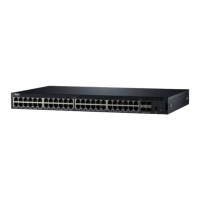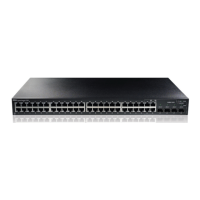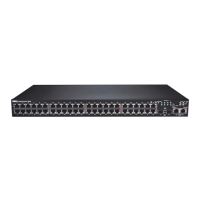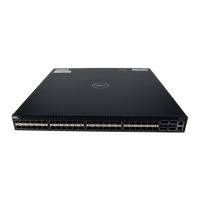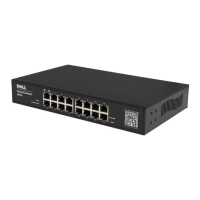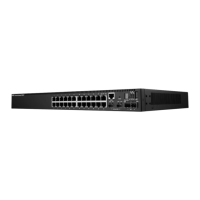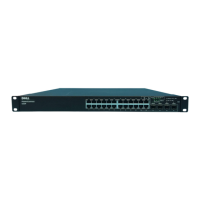196 Network Administration: Spanning Tree and LAG
FILE LOCATION: C:\Users\gina\Desktop\Checkout_new\Dell Astute\User
Guide\Dell_Astute_Network_Admin_STP.fm
DELL CONFIDENTIAL – PRELIMINARY 8/9/16 - FOR PROOF ONLY
–
Forward Transitions —
Displays the number of times the port
changed to the forwarding state.
–
Remain Hops —
Displays the number of hops remaining to the next
destination.
Link Aggregation (LAG)
This section describes link aggregation of ports.
It contains the following topics:
•Overview
• LAG Membership
• LAG Configuration
• LACP Parameters
• VLAN LAG Membership
• VLAN LAG Settings
• STP LAG Settings
Overview
Link Aggregation optimizes port usage by linking a group of ports together to
form a single Link Aggregation Group (LAG). Aggregating ports multiplies
the bandwidth between two devices, increases port flexibility, and provides
link redundancy.
The device supports the following types of LAGs:
•
Static LAGs
— Manually-configured LAGs.
•
Link Aggregation Control Protocol (LACP) LAGs
— LACP LAGs
negotiate aggregating a port’s links with other LACP ports located on a
different device. If the other device ports are also LACP ports, the devices
establishes a LAG between them.
When you aggregate ports, the ports and LAG must fulfill the following
conditions:
• All ports within a LAG must be the same media type.
• A VLAN is not configured on the port.
• The port is not assigned to another LAG.

